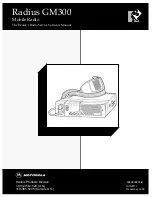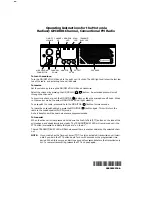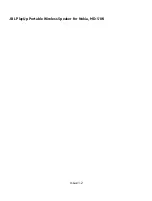
35
Figure 17: Information Display
DIGITAL VOICE OPERATION
Digital voice programmed systems have three (3) different voice modes: clear
(analog), digital, and private (encrypted). The voice modes are programmed
on a per-group basis within each trunked system and on a per-channel basis
within each conventional system.
Clear Mode
The Clear Mode is a voice mode in which the radio transmits and receives
only clear (analog) voice signals. These analog signals are non-digitized and
non-encrypted. Clear mode transmissions can be monitored easily by
unauthorized persons.
NOTE
Groups or channels programmed for clear operation cannot
transmit or receive digital or private messages.
Digital Mode
The Digital Mode allows the radio to transmit and receive digitized voice
signals. Digital signals provide improved weak signal performance and cannot
be easily monitored with a standard receiver. Groups and channels
programmed for digital operation transmit only digital signals. Message
trunked group calls and individual phone calls (I-Calls) are answered back in
the mode in which they were received assuming the call or hang time is still
active. Individual phone, all call, and emergency calls are transmitted clear if
the digital mode is disabled or inoperative.
1.
If receiving an analog message trunked call, the radio responds in the
analog mode during the hang time on the working channel.
2.
If receiving an analog I-Call, the radio responds in the analog mode
during the hang time.
3.
When using the
*WHC*
feature to respond to an I-Call (after the hang
time has expired), the call is transmitted in the mode defined by the
system mode as programmed for the current system if the ID being called
is not in the I-Call list. If the ID is in the I-Call list, then the call is
transmitted as defined by the I-Call mode programmed in the list for that
ID.
The overdial DTMF tones are not available while in the Digital Mode.
















































